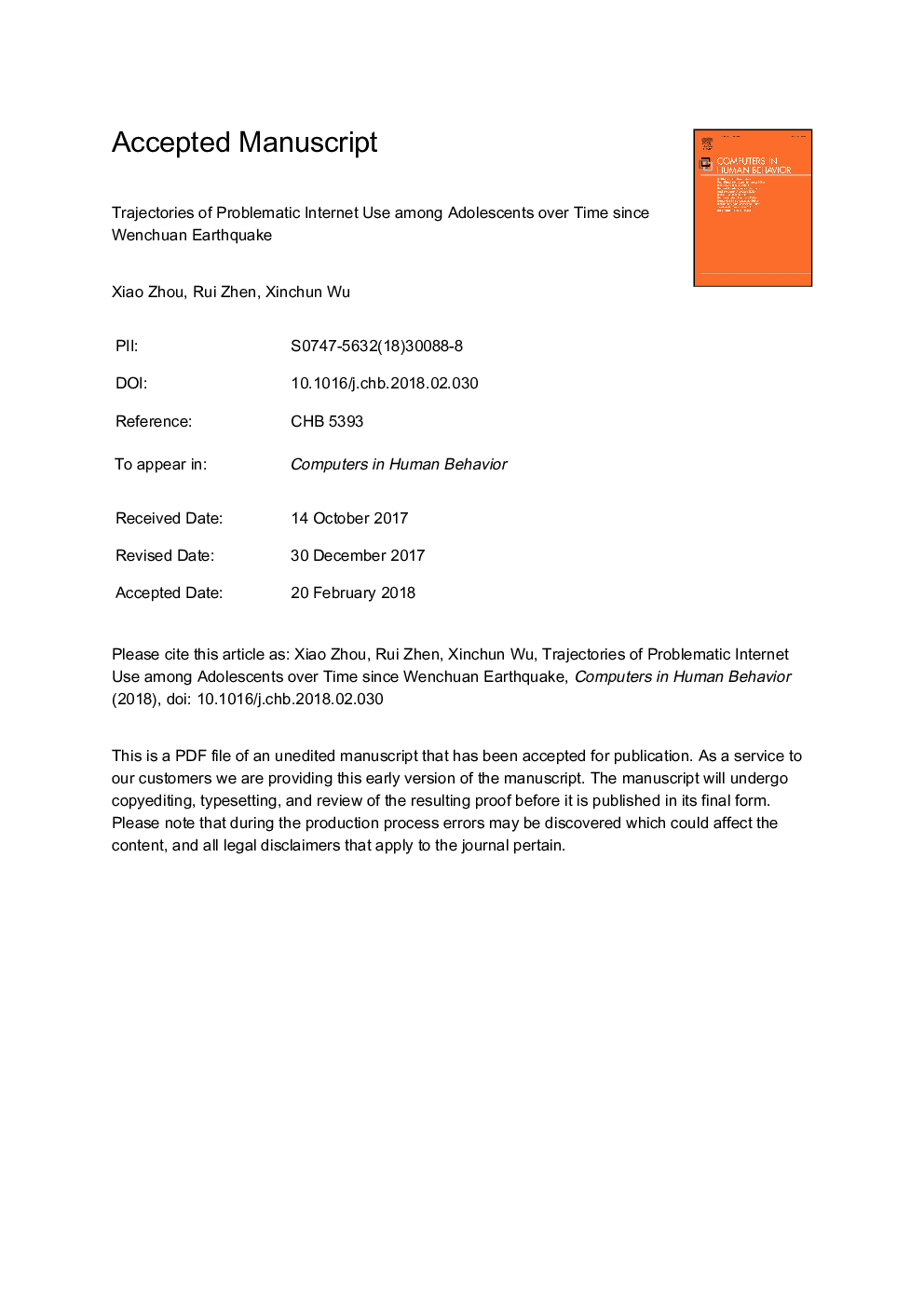| Article ID | Journal | Published Year | Pages | File Type |
|---|---|---|---|---|
| 6835978 | Computers in Human Behavior | 2018 | 27 Pages |
Abstract
This study examined the trajectories of Problematic Internet Use (PIU) among adolescents over time since the Wenchuan earthquake, and assessed the role of trauma exposure and fear in differentiating distinct trajectories of PIU. Three hundred and ninety-one adolescents were selected to complete self-reported questionnaires at one year, one and half years, two years, and two and half years after the earthquake. The results found four latent trajectories of adolescents' PIU, such as slower-increasing (31.2%), medium-stable (30.4%), high-decreasing (13.8%), and quicker-increasing (24.6%). Additionally, trauma exposure has non-significant association with trajectories of PIU, but male adolescents and/or adolescents who have more fear are less likely to belong to slower-increasing, medium-stable, and quicker-increasing groups in comparison to the high-decreasing group. Moreover, compared to the high-decreasing group, older adolescents may be less likely to belong to the slower-increasing group. These findings indicated that adolescent PIU does not remain stable over time after natural disasters, and their PIU trajectories are heterogeneous. Age, gender, and fear following trauma rather than exposure to trauma may be predictors for differentiating distinct trajectories of PIU.
Keywords
Related Topics
Physical Sciences and Engineering
Computer Science
Computer Science Applications
Authors
Xiao Zhou, Rui Zhen, Xinchun Wu,
